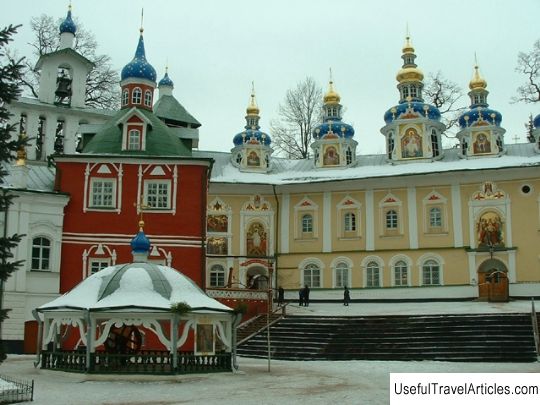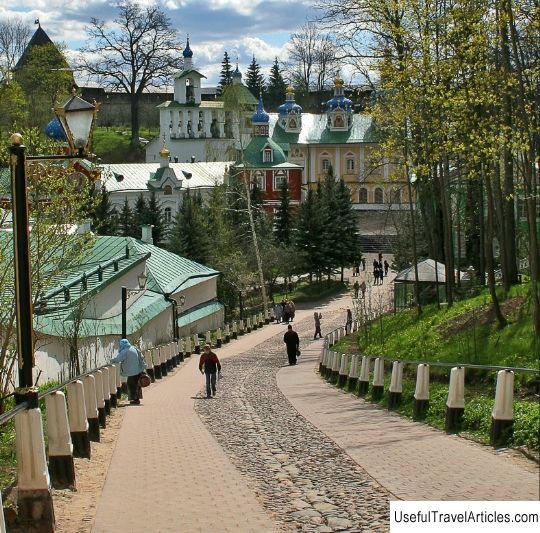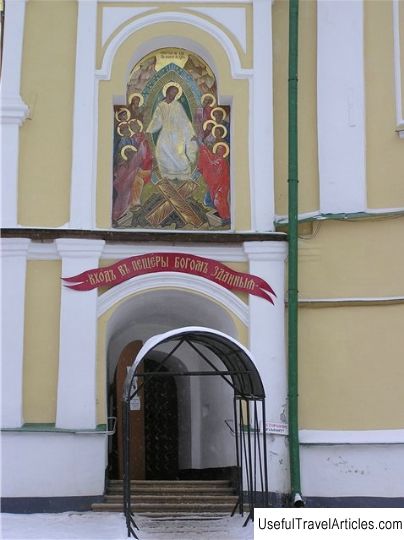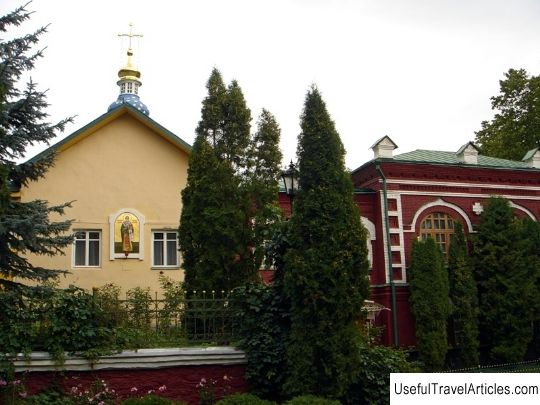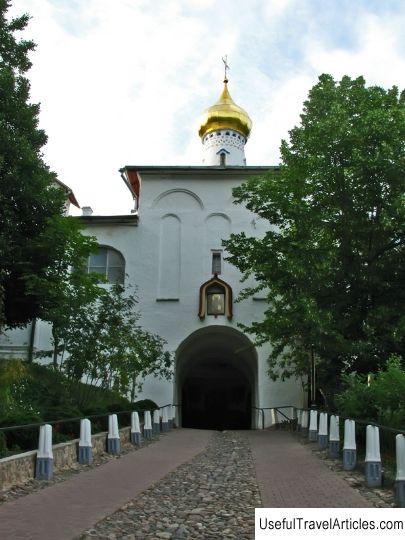St. Michael's Cathedral of the Pskov-Pechersky Monastery description and photos - Russia - North-West: Pechory
Rating: 8,1/10 (970 votes) 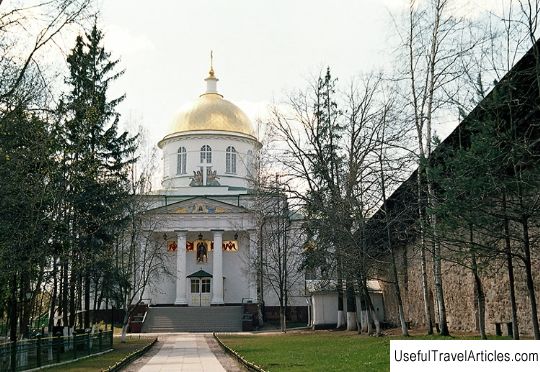
St. Michael's Cathedral of the Pskov-Pechersky Monastery description and photos - Russia - North-West: Pechory. Detailed information about the attraction. Description, photos and a map showing the nearest significant objects. Photo and descriptionAs soon as the Great Northern War ended, most of the Baltic territory began to belong to Russia again. Soon, the danger of raids by Swedish troops was completely eliminated according to the Peace of Nystad, concluded in 1721, according to which the border was pushed back a long distance, and the Pskov-Pechersky monastery was completely safe from the outside and could develop freely. Already in 1812, Russia embarked on a difficult struggle against the new conqueror. As soon as it came to the city of Pskov, local residents with faith inherent to the Russian people turned for help to the Pechersk monastery to the miraculous shrine that had previously liberated the city from enemy raids. In October 1812, the miraculous icon of the Assumption of the Mother of God was brought to Pskov - an image who liberated the city in 1581 from the siege of the troops of Batory, and then around 231 he was constantly in the monastery. With the holy image, a procession of the cross was carried out around the entire city, and on the same day Polotsk was taken by Russian troops under the leadership of Count Wittgenstein Peter Khristianovich, Field Marshal General. So the city of Pskov was spared from the enemy raid. In gratitude that the Lord helped to rid the city of enemies, the monks of the Pskov-Caves Monastery decided to build a new church in the monastery, erecting an obelisk in it. The Pskov mayor granted the emperor with a request to obtain permission to build a new church at Pskov-Pechersky monastery in honor of Count Wittgenstein, for which he received approval in the person of the Sovereign. Soon, His Majesty was presented with the plan, as well as the facade of the planned church, which was designed by an architect from St. Petersburg Rusco, for which permission was also obtained. Having learned about the church in his honor, Peter Khristianovich was incredibly moved and decided to give the new church that miraculous icon in an updated form, which helped to save himself from adversity. In 1820, the church was built and soon opened after the arrangement of the interior decoration. The work on the church took a lot of time and expense, which is why the temple took its final form only in 1827. The consecration of the church took place in the same year and was dedicated to the Archangel Michael, although the consecration was originally planned in honor of the Wisdom of God. The new cathedral was located on the upper part of the site of the monastery complex, to the south of the entrance, and its western portico was attached to the section of the fortress wall. The temple stands on the site of the previously existing Brusovaya Tower, which was destroyed in 1581, and the remains of which were soon dismantled. The whole image of the temple is designed in the style of Russian classicism. The building is square in plan, one-domed and has four bell porticoes, as well as a semicircular altar. On the west side, a standard rectangular vestibule with choirs is made. The planned cross has nodes in which there are four pylons, while the latter have a large light drum on the arches, covered with a dome. The cross sleeves also have an overlap in the form of box vaults, and in the axils of the cross there are “g” -shaped shapes in the plan. The overlap in the vestibule is made with a corrugated vault and demoulding systems located above wide niches located in the end walls. The straight porticos of the Doric order are decorated with a triglyph-metope frieze, as well as ordinary triangular pediments. Niches were mounted in the apse part, and a continuation of the cornice belt was made. In the interior of the church building, the painting was carried out using paints. The temple building was built of bricks and then plastered and whitewashed. The floor is decorated with mosaic tiles. As for the overall dimensions of the building, the length is 37 meters with stairs and porticos, the width is 35 meters. The church quadruple has a length of 30 meters, and its width reaches 17 meters. A famous shrine is kept in the St. Michael's Cathedral - the right hand (right hand) of the Martyr Tatiana, which is venerated all over the world.        We also recommend reading Summer Garden description and photo - Russia - St. Petersburg: St. Petersburg Topic: St. Michael's Cathedral of the Pskov-Pechersky Monastery description and photos - Russia - North-West: Pechory. |
